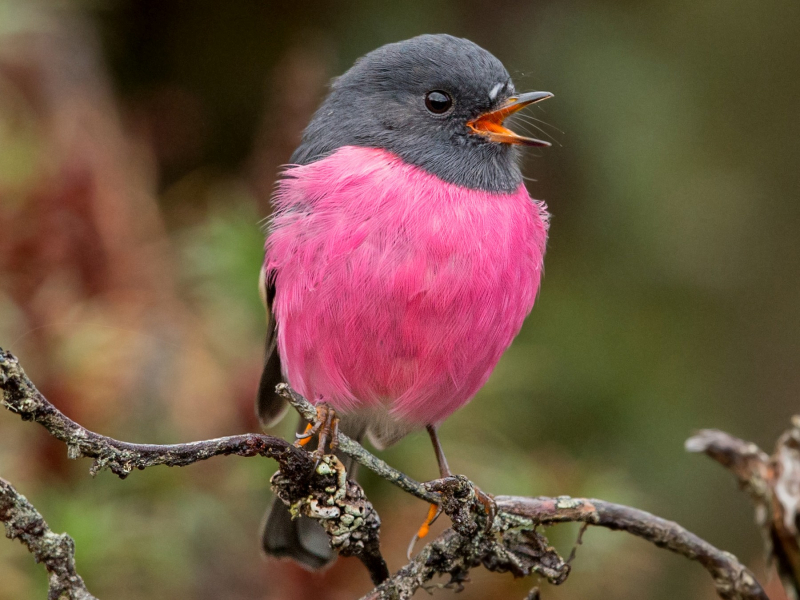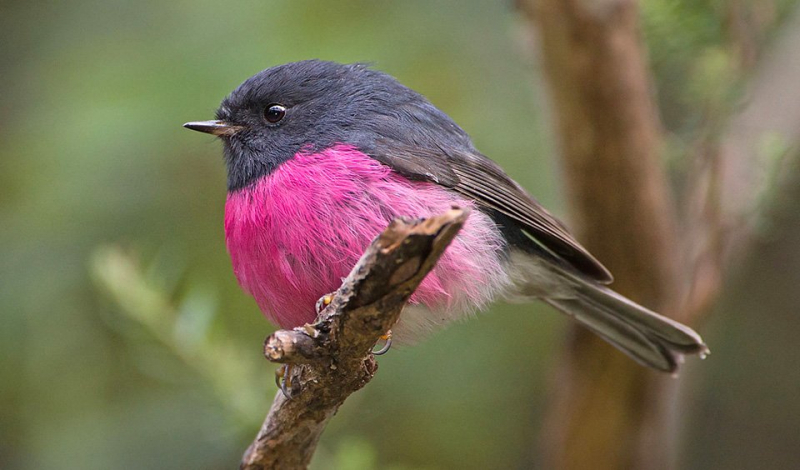Pink Robin
Southeast Australia is home to the diminutive passerine bird known as the Pink Robin (Petroica rodinogaster). Cool temperate woods in remote southeast Australia are its natural home. It is sexually dimorphic, like many Petroicidae brightly colored robins. The robin is a little, thin-billed bird that is 13.5 cm long with dark brown eyes and legs. The male has a pink breast, a distinguishing white mark on his forehead, and grey-black upper parts, wings, and a tail. The stomach is white. The female's feathers are gray-brown.
The pink robin and its Australian relatives are not closely related to either the European or American robins, but rather appear to be an early branch of the Passerida group of songbirds, hence its position on the passerine family tree is unknown. September through January are the breeding months. The nest is a clean, deep cup constructed of moss. The nest is often built in a tree fork up to 5 meters (15 feet) above the ground using spider webs, feathers, and hair for binding or filling. There is a clutch of three to four eggs laid. The 18 by 14 mm-sized eggs are characterized by dark brown and lavender splotches and spots, which are typically concentrated near the large end. They are also greyish, greenish, or blueish white.












